The highest priority of the Institute is to pursue process-oriented research into fundamental issues of the evolution of the Earth's crust and the biosphere in the geological past. The Institute is part of the University center of excellence (UNCE) Center for Geosphere Dynamics and has established a vigorous international collaboration. Great emphasis is also placed on presenting research results in highly ranked international journals (see Publications) and on the active involvement of both undergraduate and graduate students in research projects.
Research at the Institute of Geology and Palaeontology is implemented by three teams and encompasses Continental Tectonics, Sedimentary Geology and Palaeoclimatology, and Palaeontology.
Continental Tectonics Group [ctg.cuni.cz]

The Continental Tectonics Group examines a wide range of topics including mechanisms of magma transport and deformation in the Earth's crust, volcanic processes, tectonometamorphic development of active continental margins and collisional orogens, dynamics of accretionary wedges, and rock magnetism and the magnetic fabric of geological bodies. A joint research programme with the Czech Technical University in Prague concentrates on the modelling of geological processes, such as rotation of crystals in magma, cooling of magma bodies, caldera collapse, and basin development. A characteristic feature of our research is a combination of modern field Geology and advanced analytical methods, especially anisotropy of magnetic susceptibility (AMS), electron back-scattered diffraction (EBSD), computer-aided image analysis, U–Pb Geochronology, Petrology, and Geochemistry.
Contact: Jiří Žák
Sedimentary Geology and Palaeoclimatology Group

The Sedimentary Geology and Paleoclimatology Group concentrates on the development of sedimentary basins and sedimentary processes, as well as on Palaeogeography and Stratigraphy with a special emphasis on Late Palaeozoic and Cenozoic basins in the Bohemian Massif. To characterise sedimentary processes and environments, we use modern methods, including analysis of facial architecture, Sequence Stratigraphy, and high-resolution stratigraphic correlation integrated with U–Pb Geochronology. Other research targets include sediment provenance and Geochemistry, which are used as a proxy for interpretation of palaeoclimatic changes.
Contact: Stanislav Opluštil
Palaeontology and Palaeobiology Group

The Palaeontology and Paleobiology Group embraces a broad spectrum, ranging from Micropalaeontology and Palaeozoology (including Vertebrate Palaeontology) to Palaeobotany. Our main goal is to understand the evolution of life on planet Earth as a prerequisite for understanding the current state of the biosphere and for predicting its development in the future. A key element of our research are interdisciplinary studies dealing with Biostratigraphy, Palaeoecology, Taphonomy, analysis of evolutionary changes from fossil assemblages, functional morphology, analysis of biomineralisation and ultramicrostructures of fossil organisms, mass extinctions, and climate changes from palaeopopulation analysis. Our synthetic studies also examine interactions of biological, chemical, and physical processes in the fossil record and connect Palaeontology with Geochemistry, Eventostratigraphy, Climatology, Sequence Stratigraphy, and Geobiology.
Contact: Martin Košťák
Due to the great diversity of palaeontology, this team is divided into several subgroups, which, however, very often cooperate with other paleontological subgroups within the synthesis.
Subgroup of micropalaeontology: THE MICROPALAEONTOLOGY FORAMINIFERA-NANNOPLANKTON GROUP





















